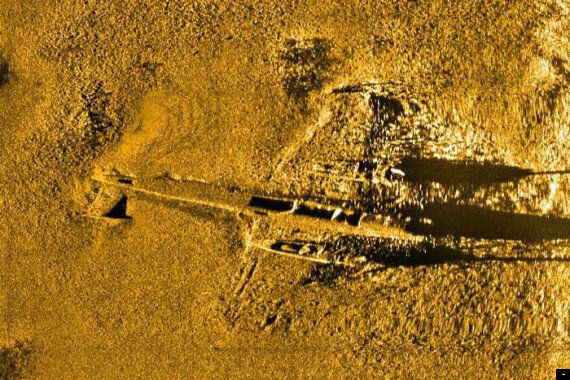The only surviving German Second World War Dornier Do 17 bomber is to be raised from its watery grave in the English Channel in an operation announced on Friday.
Its retrieval from the Goodwin Sands off the Kent coast more than 70 years after it was shot down during the Battle of Britain will mark the biggest recovery of its kind in British waters, the RAF Museum said.

Lifting the Dornier from the seabed will take around three weeks
The existence of the aircraft became known when it was spotted by divers in 2008 at a depth of some 50ft lying on a chalk bed with a small debris field around it.
Sonar scans by the RAF Museum, Wessex Archaeology and the Port of London Authority then confirmed the identity of the aircraft as the Dornier Do 17Z Werke number 1160.
Nicknamed the Luftwaffe's "flying pencil" bombers because of their narrow fuselage, this aircraft is said to be in "remarkable condition".
Other than the effects of sea life, such as barnacles, coral and marine life, it is largely intact.
The main undercarriage tyres remain inflated and the propellers clearly show the damage inflicted during the bomber's fateful final landing, experts have said.
Lifting it from the sea will take around three weeks using pioneering technology and will have to take place within a given timeframe due to tide and weather conditions.
Retrieving it will be made possible due to a grant of more than £345,000 from the National Heritage Memorial Fund (NHMF), which was set up to save the country's most precious heritage.
Air Vice-Marshal Peter Dye, director general of the RAF Museum, said: "The discovery and recovery of the Dornier is of national and international importance.
"The aircraft is a unique and unprecedented survivor from the Battle of Britain and the Blitz.

The Dornier bomber played a major role in Germany's assault on the south east of England
"It will provide an evocative and moving exhibit that will allow the museum to present the wider story of the Battle of Britain and highlight the sacrifices made by the young men of both air forces and from many nations.
"It is a project that has reconciliation and remembrance at its heart."
Once it has been lifted, work will start to conserve and prepare the Dornier for display. The work will take place at the Michael Beetham Conservation centre, the RAF Museum's conservation centre at Cosford, Shropshire.
It will be placed in two hydration tunnels and soaked in citric acid for the first stage of its conservation. Once the delicate process is complete, the aircraft will be displayed at the museum's London site within the context of the Battle of Britain story.
Culture minister Ed Vaizey said: "Today marks the beginning of an exciting project to raise the last surviving Dornier Do 17 bomber from the English Channel.
"I'm delighted the RAF Museum and the NHMF have joined forces to make this project possible and I know that it will be a tremendous addition to the museum's collection where it will serve to educate and entertain all who visit."
Dame Jenny Abramsky, chair of the NHMF, said: "This is incredibly exciting news. The Battle of Britain remains one of the most pivotal moments in the history of our country.
"The Dornier Do 17 was one of its main protagonists and therefore the trustees at the NHMF felt it was vital that this, the last known surviving example, be safeguarded."
The Dornier Do 17 will join a range of more than 1,200 objects and places which have been safeguarded by the NHMF at a cost of more than £300 million.
These include HMS Caroline, the last surviving First World War ship, a rare collection of work by Second World War codebreaker Alan Turing and HMS Alliance, the last surviving submarine of the Second World War.
It is hoped that the aircraft will be raised by the end of this month or early June.